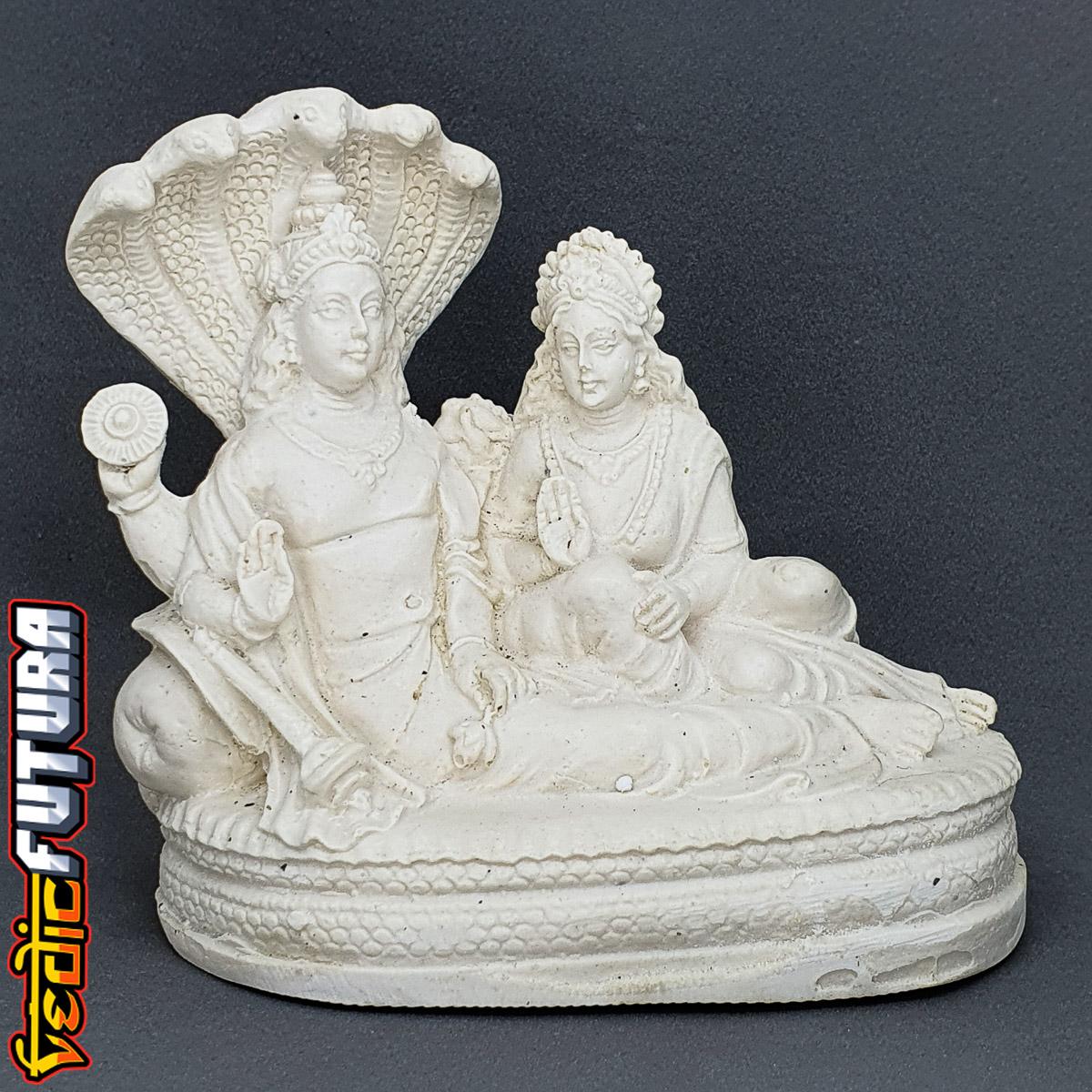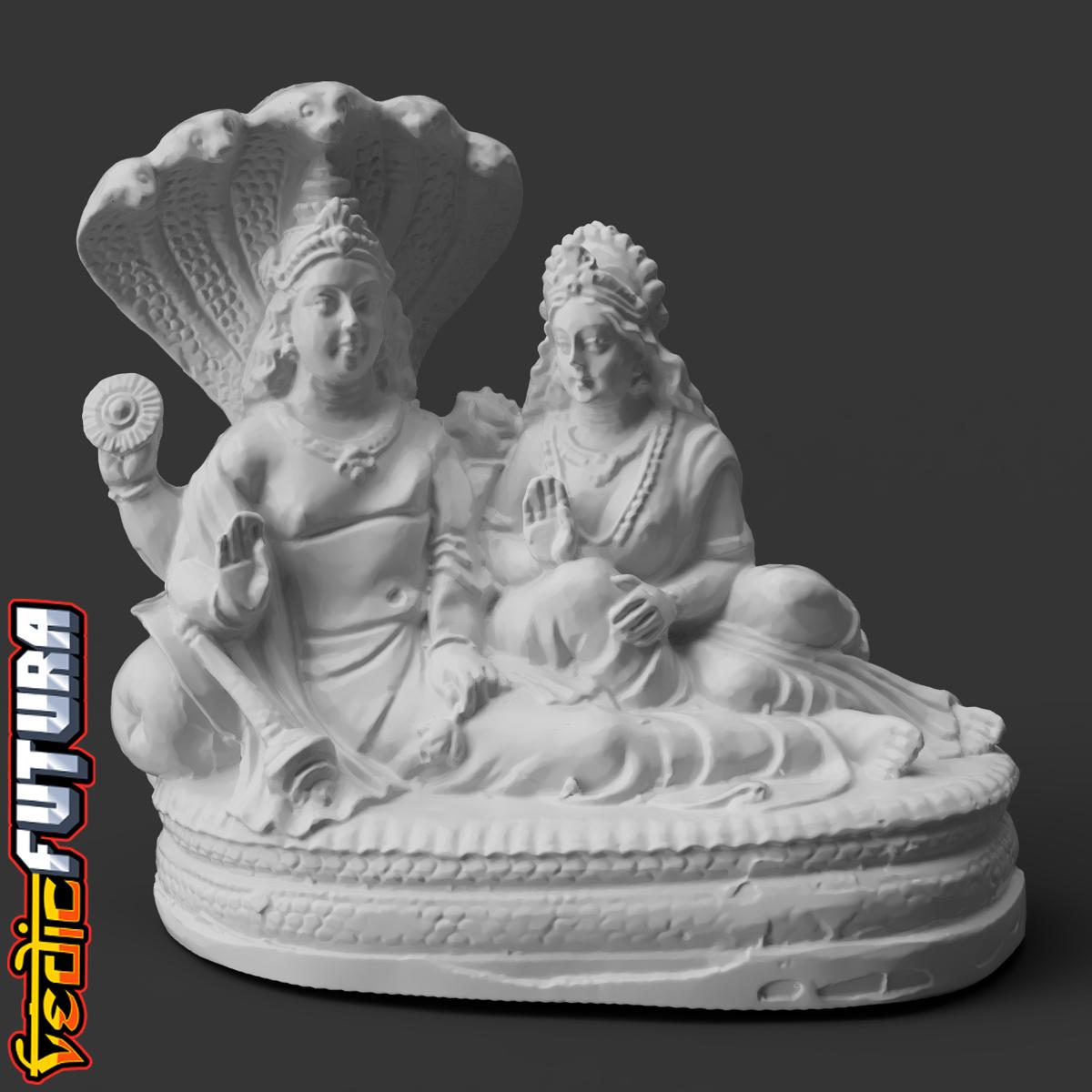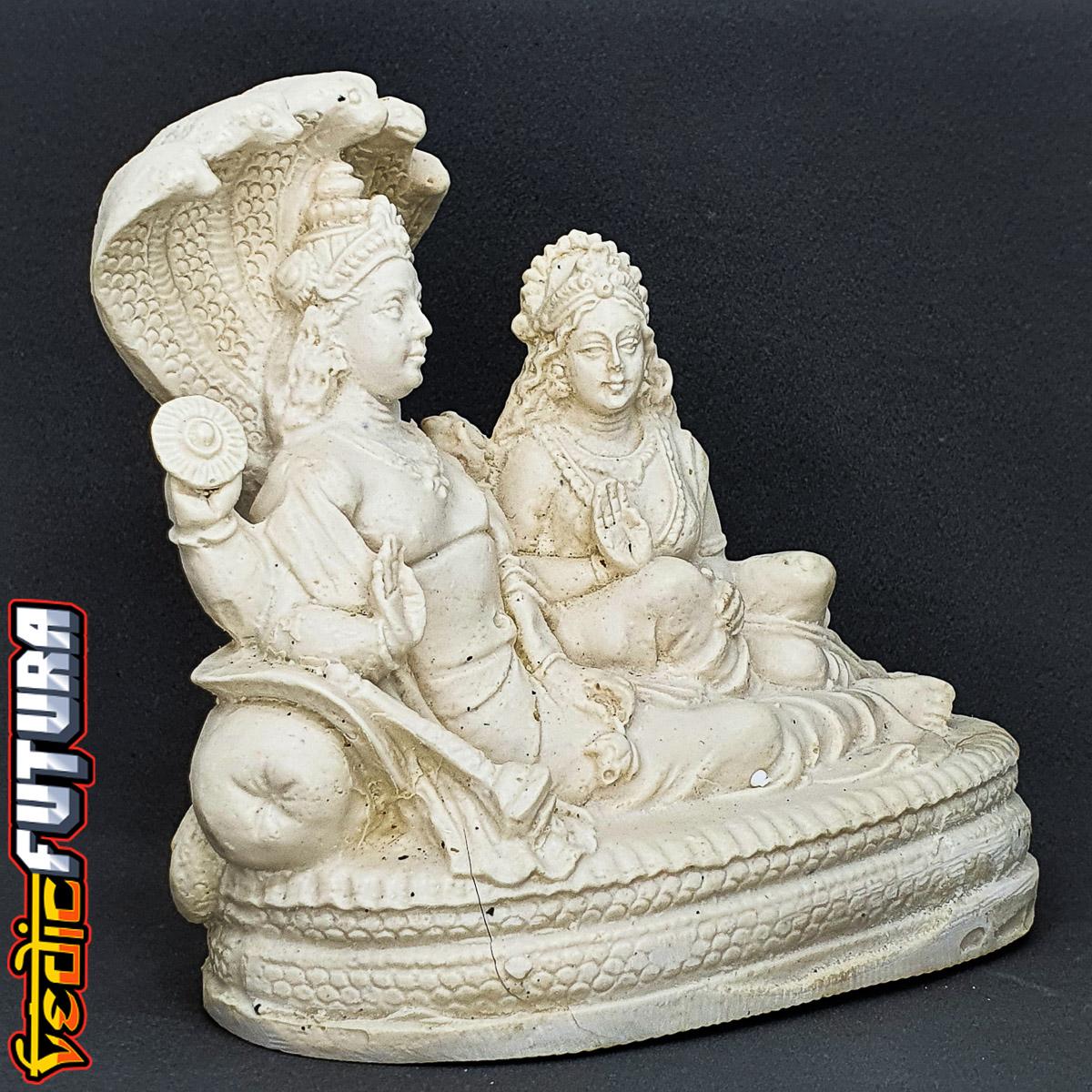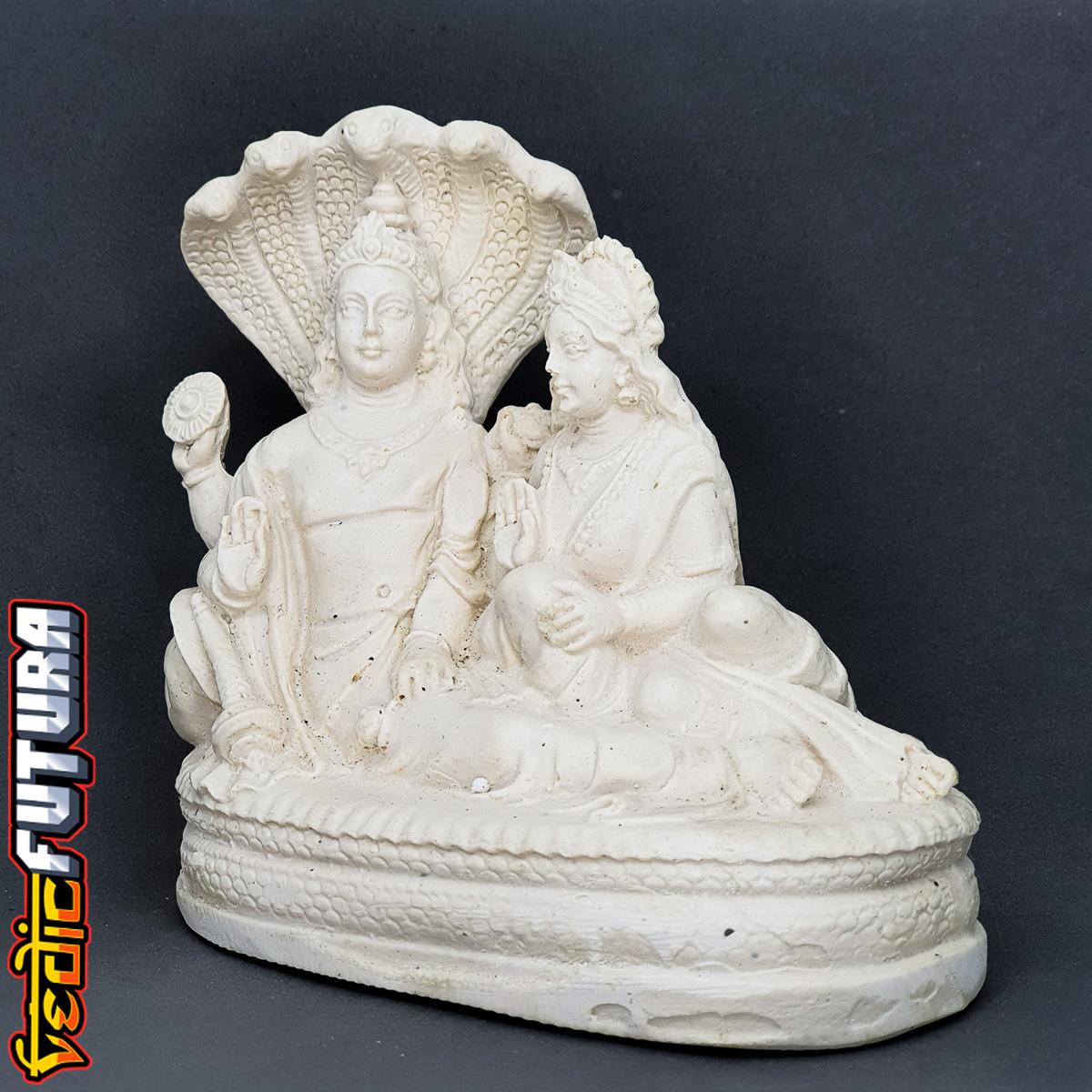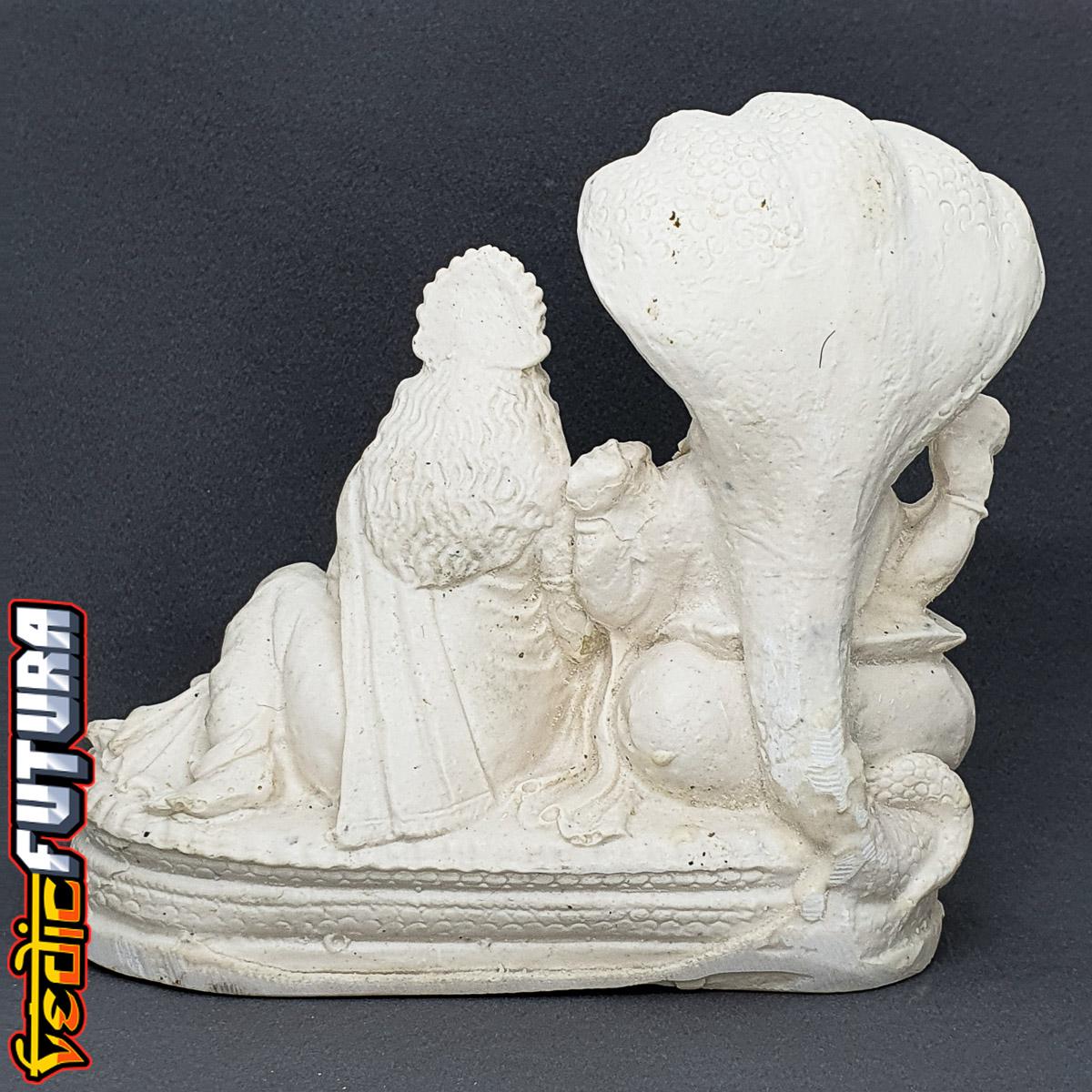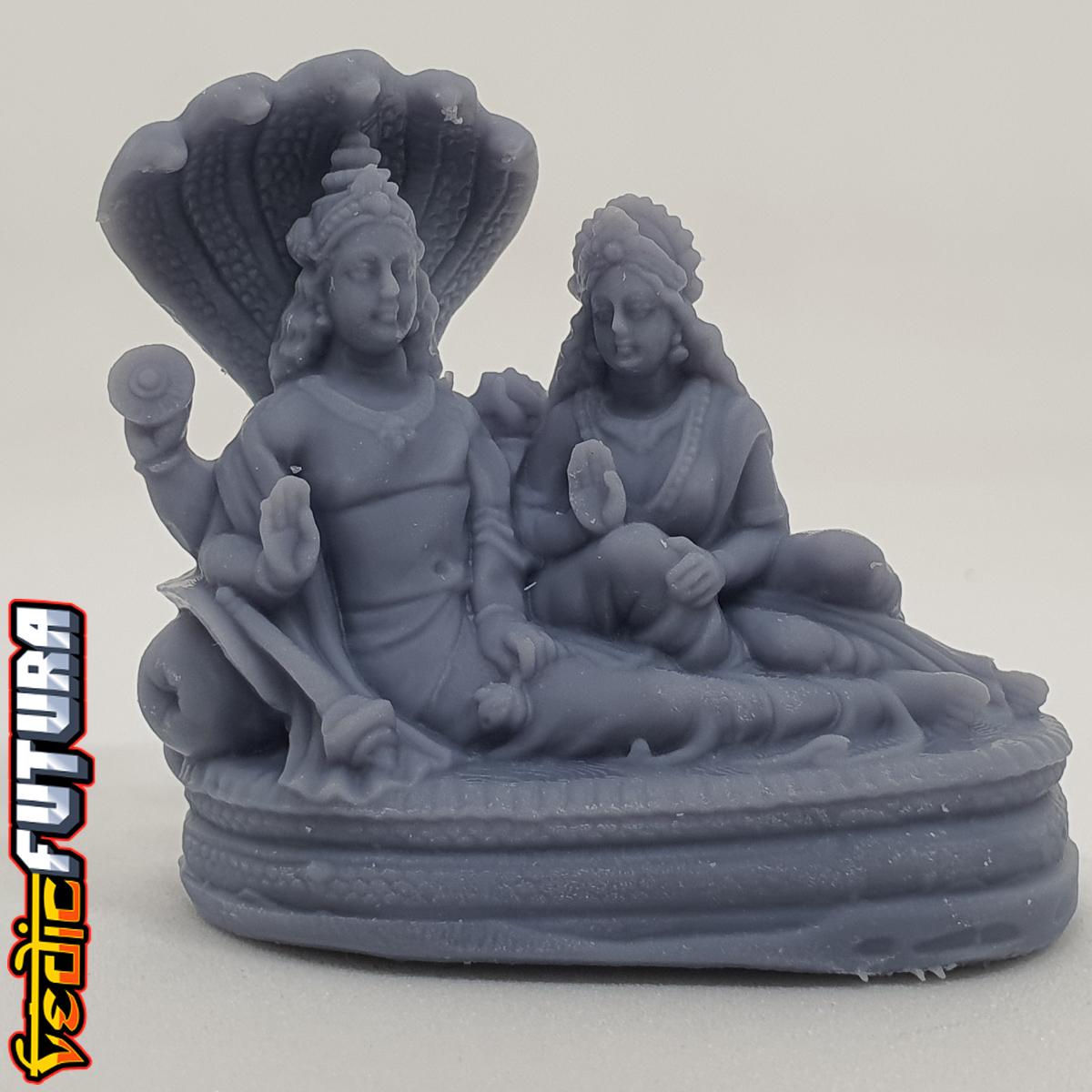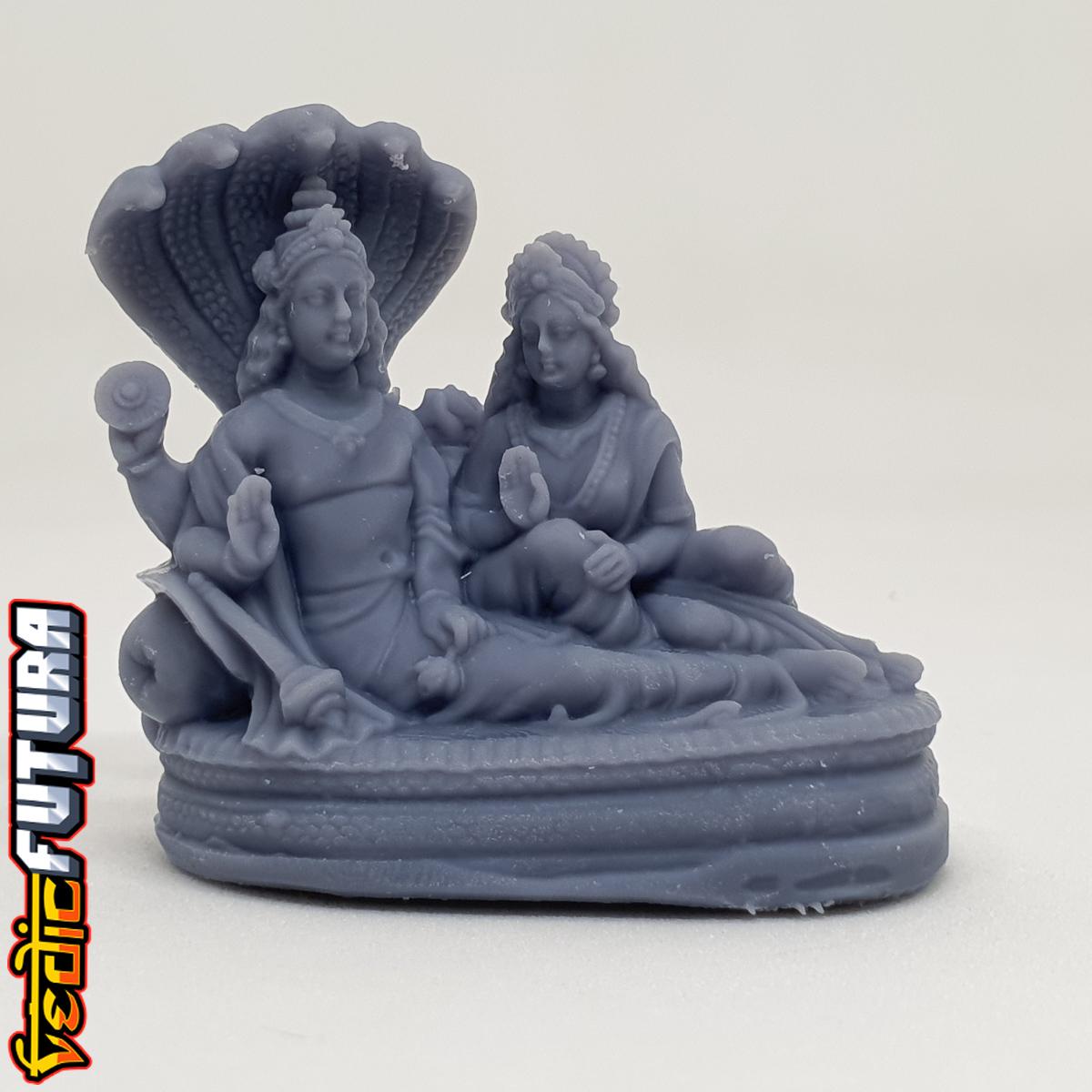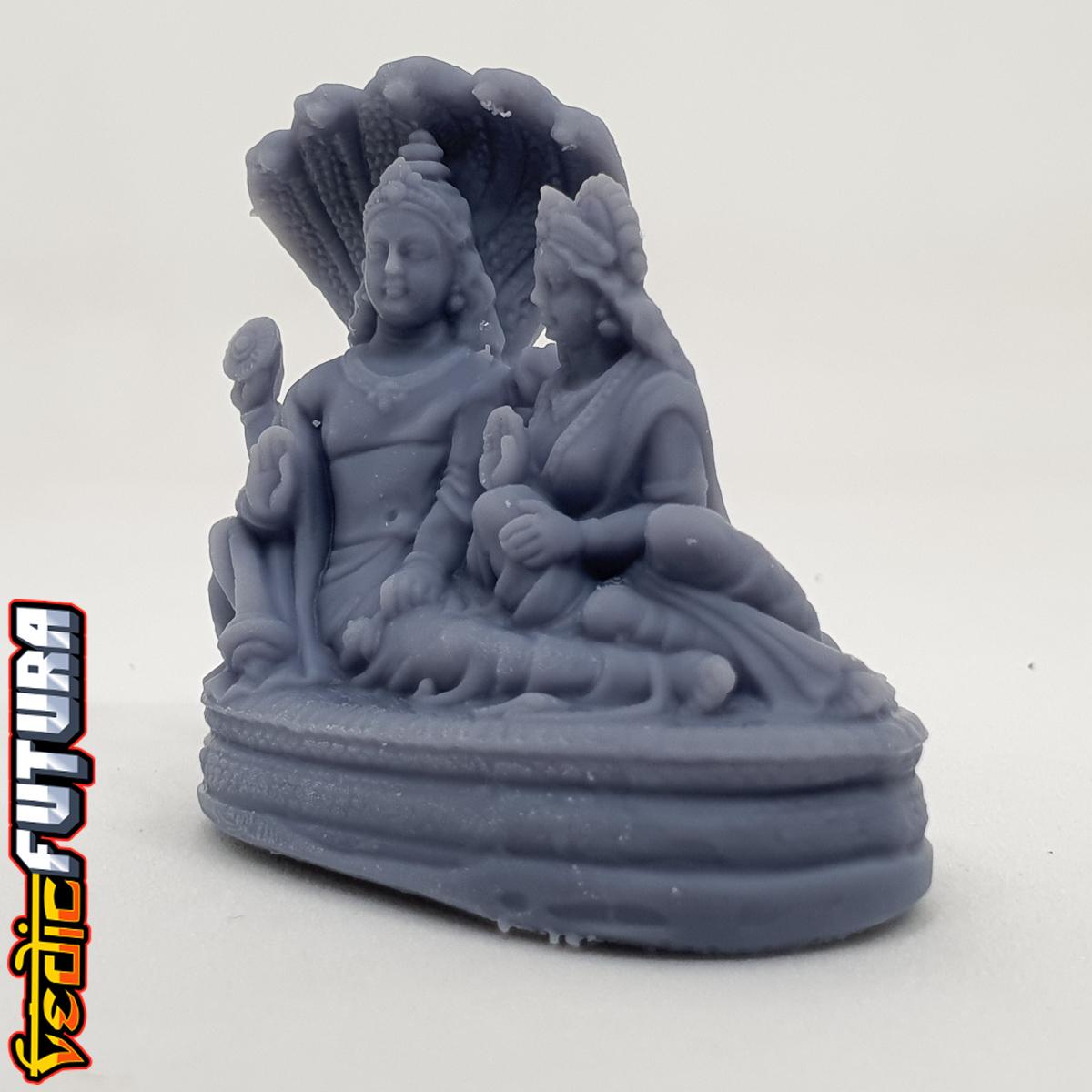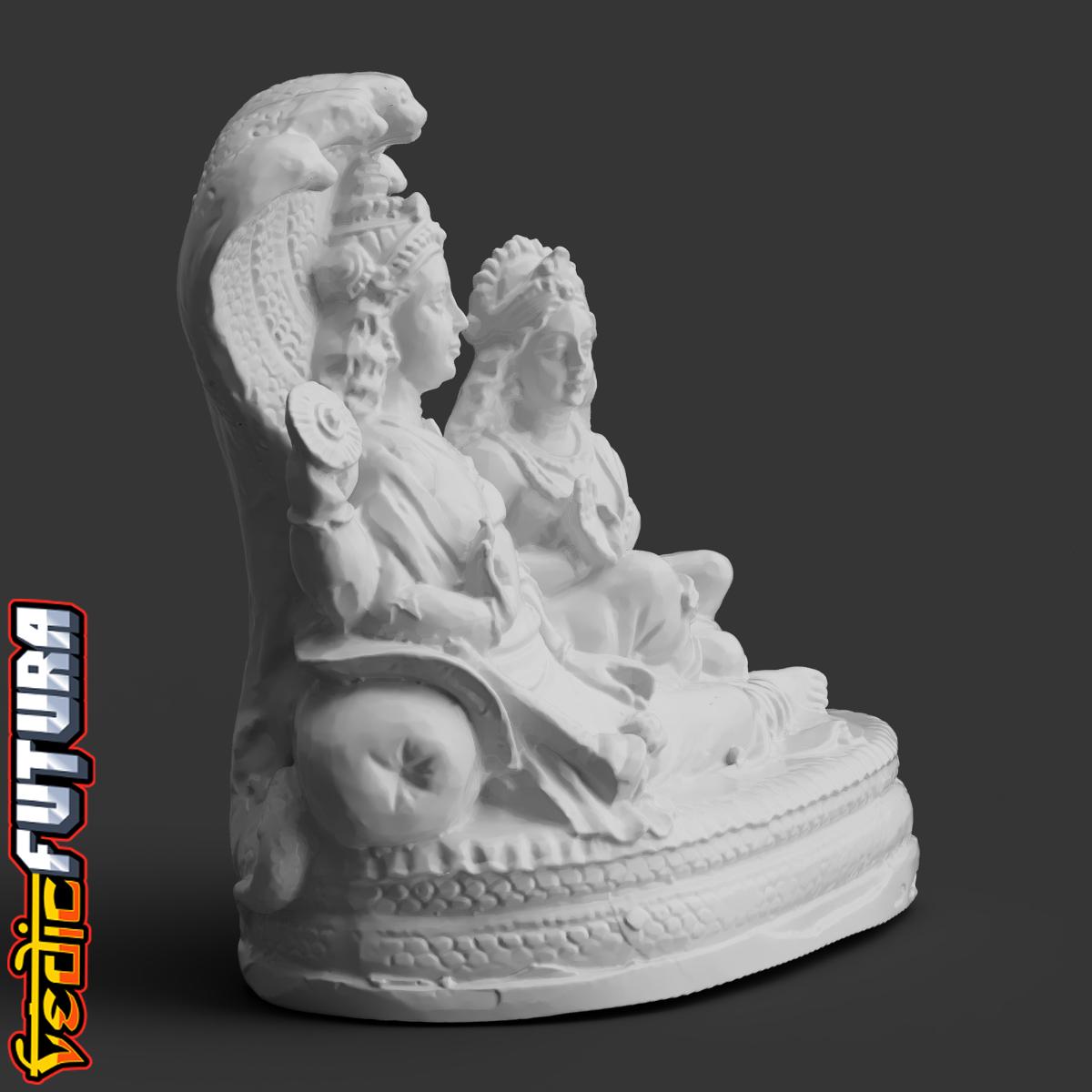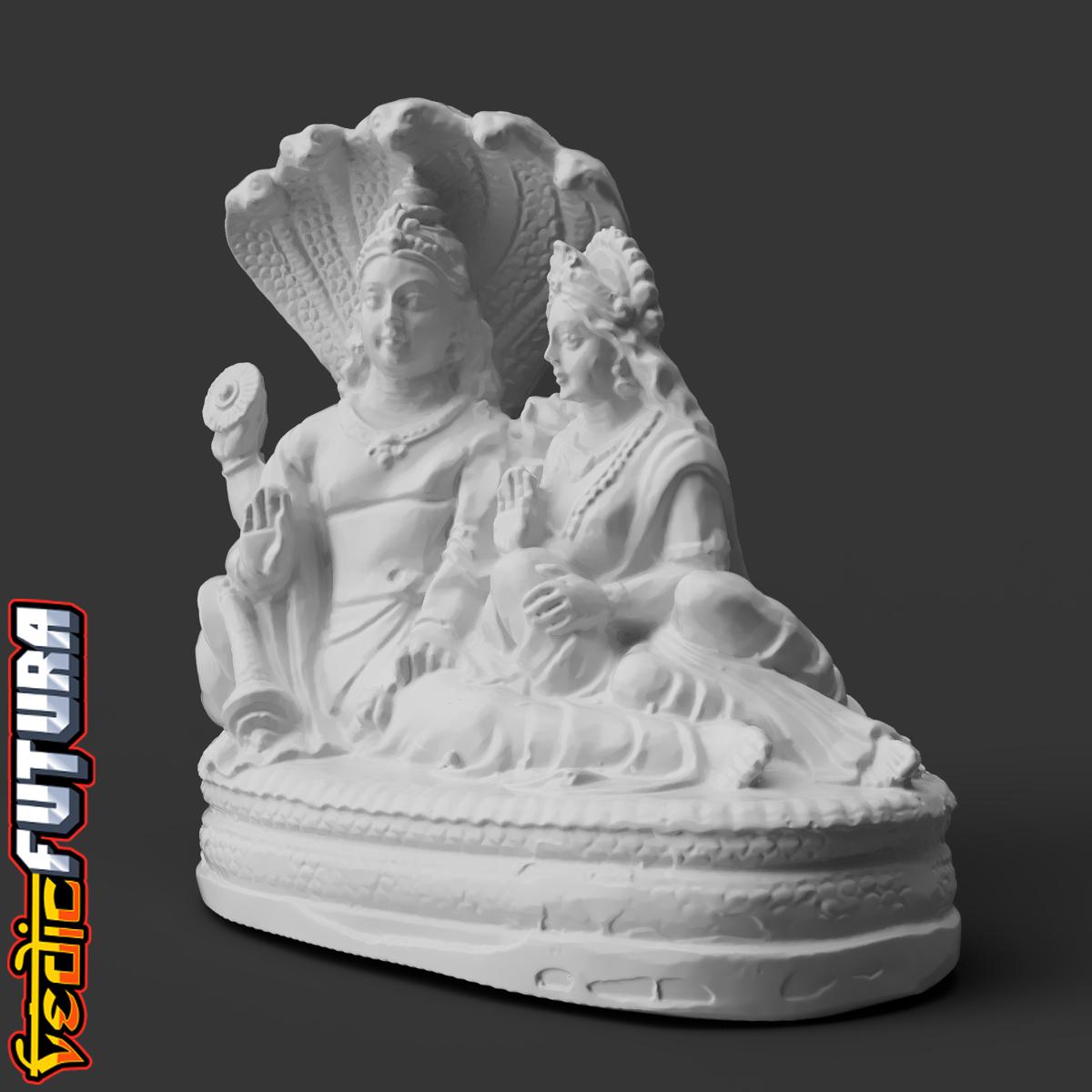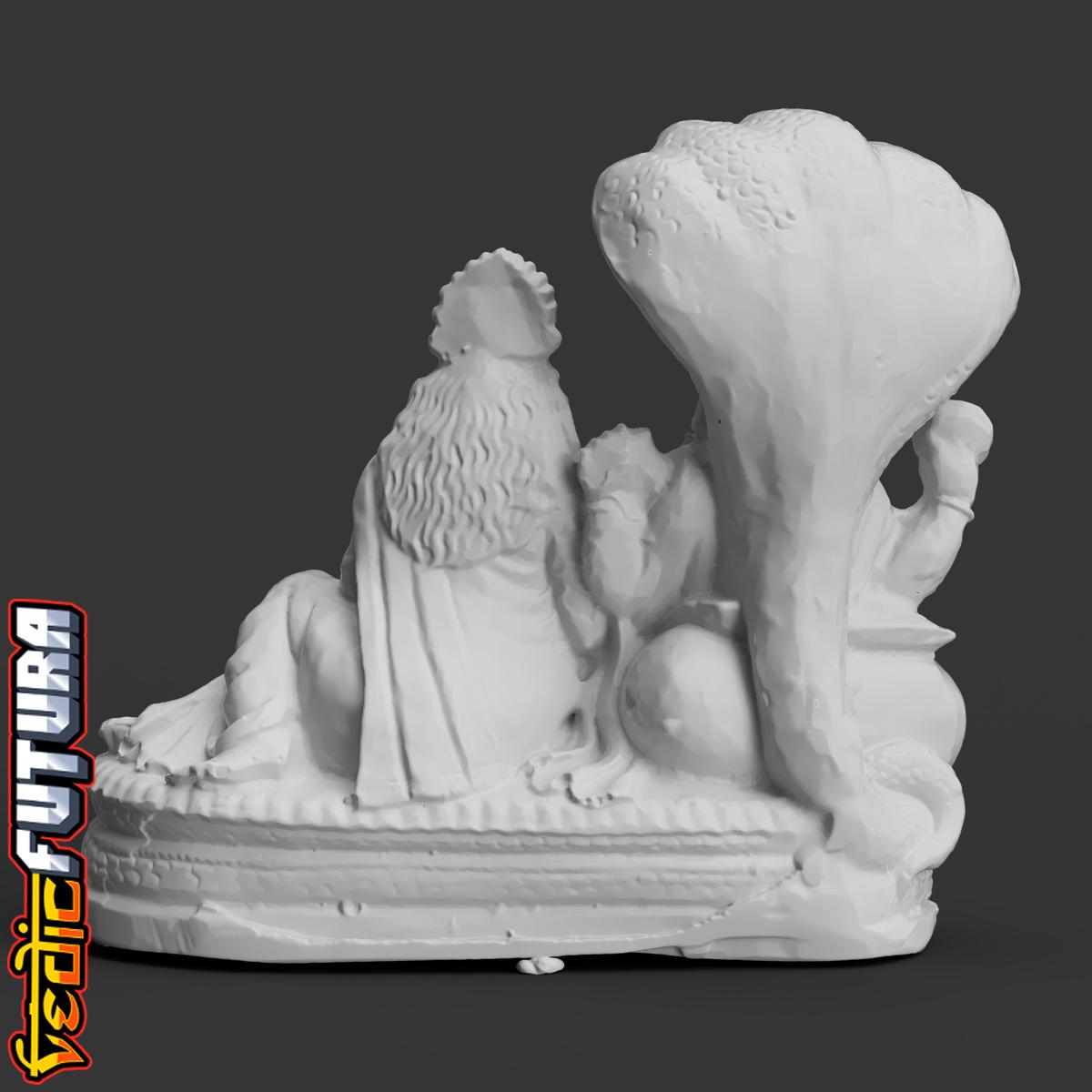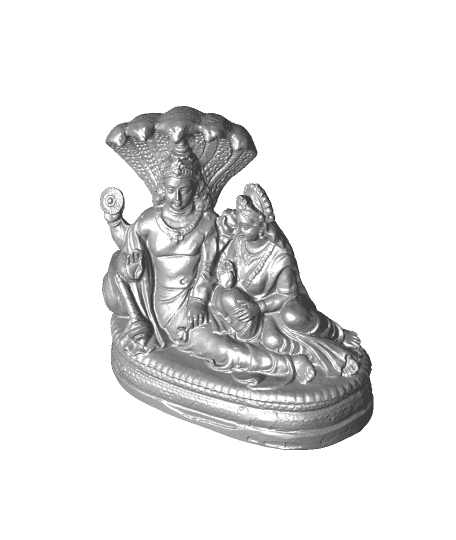One of the most recognizable images of Hindu mythology, Lord Vishnu relaxing in the Kshira Sagara (the Milky Ocean) symbolizes bliss, diversity and the powers of creation. This exquisite model depicts Lord Vishnu relaxing on a bed made by the mythical five headed snake Seshnaag. Vishnu is often depicted as resting on Shesha. Shesha is considered a devotee or bhakt of Vishnu. Goddess Lakshmi is also seen accompanying Vishnu on his bed. Shesha is generally depicted with a massive form that floats coiled in space, or on the ocean of bliss, to form the bed on which Vishnu lies. Sometimes he is shown as five-headed or seven-headed or ten-headed serpent; but more commonly as one thousand-headed, or five thousand-headed, or ten thousand-headed, or fifty thousand-headed, or one hundred thousand-headed, or even five hundred thousand-headed, or even as many as one million-headed serpent; sometimes with each head wearing an ornate crown. His name means "that which remains", from the Sanskrit root śiṣ, because when the world is destroyed at the end of the kalpa, Shesha remains as he is. Shesha is also depicted as floating in the ocean of the changing world, forming the bed of Mahavishnu. Since he is known as Adishesha (the foremost of snakes) and because he is Anantashesha or simply Ananta (endless, as He is known to remain in existence even after the end of the Kalpa, when the whole universe is destroyed).
🔥 Support VedicFutura ! 🔥 🌏 Check Out Our Awesome Blog and Website! ❗️ For Rights To Sell 3D Prints of VedicFutura Models Please Subscribe
ॐ
